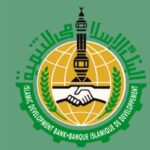The core reason for the substantive demands about restructuring Nigeria is linked, paradoxically, to widespread concerns about how far the military went in completely restructuring the Nigerian State. They dismantled the tripartite regional structure, which had become quadripartite with the creation of the Mid West Region in 1963. In 1967, just before the advent of the civil war, the Gowon Military Administration made a bold and popular move by creating 12 states from the four existing regions. The move was popular because it addressed the correction of the structural imbalances and ethno-regional inequities of the inherited federal structure. The good move was however followed by bad ones. In 1976, the Murtala-Obasanjo Administration increased the number of states from 12 to 19; General Babangida raised the number of states to 21 in 1987 and to 30 in 1991 while the regime of General Abacha increased the number of states in the country to 36.
This restructuring through the multiplication of states has produced a Jacobin effect that strengthened federal power relative to the powers of the federating units. We should not forget that there was an elite consensus that the First Republic collapsed because the regions were too strong and were pulling away from the Centre. Weakening their power base was therefore the logical objective of restructuring. The real issue however was not weakening of the States per se, but the erosion of a counterweight to what became known as the “Federal Might”. Rather than correct the regional balance in the country, the concentration of enormous powers at the centre weakened all political groups that are not in control of the centre. Increasingly, this form of continuous one-directional restructuring led to the emergence of a quasi-unitary State, which mimicked the military command structure of the time.
This tendency was reinforced with further restructuring through the decentralisation policy of the Babangida regime carried out between 1987 and 1991 with the declared aim of increasing the autonomy, democratising, improving the finance and strengthening the political and administrative capacities of local governments. The number of local governments was increased from 301 to 449 in 1989 and to 589 in 1991 and again to 774 in 1996. With local government engineering as a federal prerogative, Nigeria became even less federal in its operations as a constitutional device was enacted to fund local governments directly from the centre. Although the governors never allowed it work, it posed serious questions about how federal the Nigerian State was. Virtually all Nigerians became dissatisfied with the present condition of weak federating units and an excessively strong centre.
There are a number of options for the restructuring of the Nigerian federation. These include:
1) Return to the tripartite regionalism of the First Republic. This is a non-starter as the regions were too large and above all, too uneven. The North alone was much larger than the combined regions in the South.
2) Dismantle the 36 State structure and reconstitute the federation along the six zonal structure. Nigeria is a very large country and the six federating units might be too large to cater for a much-needed sense of local identity. Some of the zones also clearly lack internal cohesion.
3) Maintain the current 36-State structure but take some power and resources from the federal level and transfer it to the State level. The problem with this option is that the cost of governance has risen exponentially under the 36-State structure and the result has been the lack of resources for development. It is this uneven allocation of available resources to maintain the political structure and its supporting bureaucracy rather than promote development that is largely responsible for the current economic crisis in the country.
4) Return to the 1967 12-State Structure which sought to correct the uneven distribution of power between the federal and regional governments.
Our view as Friends of Democracy is that a return to the 12-State Structure is the most viable option for Nigeria at the moment and in the foreseeable future.
The distortion of the 12-State structure by multiplying the States to 19, 21, 30 and 36 was done to appease new minority groups that emerged after state creation, to spread federal largesse more evenly and sometimes for selfish reasons. Today, Nigeria cannot sustain the 36-State structure due to its over-dependence on oil revenues that would continue to dwindle in the coming years.
The key principle for restructuring Nigeria must, then, be as follows:
- A) States must be economically viable and must rely on fiscal resources they generate themselves instead of handouts from the Centre;
- B) States must operate in a democratic manner and be run by Chief Executives that are accountable to the people and legislators that are independent;
- C) States should have the constitutional and legislative powers to determine their internal structures such as the number of local governments they desire.
- D) States must be allowed to determine their own framework and mechanism for the choice of leaders at all levels, which recognises and combines both merit and the need for fair representation of the broad identities that make up the states – such as geography, ethnicity, religion etc.;
- E) Balance the distribution of power and fiscal resources between the states and the federation to address the desire for local resource control and the viability of the federation as a whole;
Constitutional Proposals
- A return to the 12-State federal structure of 1967. The 12-States would be the federating units;
- The 12 States shall be re-designated as “Regions” and shall have full control of their resources while paying appropriate taxes to the federal government;
iii. The Regions shall have the powers to create and maintain local governments as they desire;
- Overhaul the Legislative Lists and reassign agriculture, education and health to the Residual List in which States alone would have competence but the federal government would share a regulatory role with the States;
- Mining should be reassigned to the concurrent list with on-land mining under the federating units and off-land mining under the control of the government of the federation.
- Policing should also be reassigned to the concurrent list with only inter-state crime, cybercrime and international crime under the jurisdiction of the federal police.
vii. The power of taxation should remain concurrent.
viii. The Federal Character principle should be retained and strictly and universally observed.
- The current Senate should be merged with the House of Representatives under a unicameral legislature
Conclusion
This memorandum is a product of years of patient and painstaking consultations with a wide variety of stakeholders across the length and breadth of Nigeria. While it does not claim to cover all the divergent interests of all the political, cultural and geographic groups in Nigeria, we believe these proposals, if accepted, will substantially improve and stabilise Nigeria’s Federation, cater for the welfare of a large majority of Nigerians and allocate the nation’s resources in an efficient and cost-effective manner. Return to a previous structure is never easy but Nigeria is in dire straits and the time for tough decisions has come.
This is derived from a memorandum sent to the National Assembly Constitutional Review Committee by Friends of Democracy – Alh. Bashir Othman Tofa, Amb. Fatimah Balla, Alh. Sule Yahaya Hamma, Dr. Abubakar Siddique Mohammed, Mr. Sam Nda-Isaiah, Bashir Yusuf Ibrahim, Mal Bilya Bala, Dr. Usman Bugaje, Mr. Hubert Shaiyen, Dr. Kabir Az-Zubair and Prof. Jibrin Ibrahim
We lost Balarabe Musa on Wednesday. We mourn him for his long life of commitment and service for the downtrodden. We respect him for his disdain for crass material acquisitions. He lived a life of struggle and knew the meaning of public service. May Allah forgive his soul and grant him eternal rest. Amin.
We also lost Jerry Rawlings yesterday – Coup leader, young revolutionary, military vanguardist & dictator, leader of democratic transition, elected president, Pan Africanist, husband of a presidential candidate, Junior Jesus and so much else. Complex legacy for Africa. RIP!!! Farewell.




